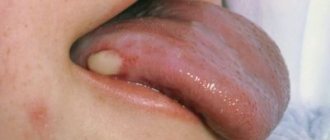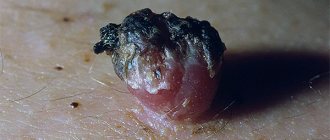Eyelids.
Protective system of the eye.
A thin layer of skin that protects against dust, sweat and foreign objects. The eyelids also help moisturize the eyes and distribute liquid over their surface when blinking.
This part of the body consists of four layers:
- Skin and subcutaneous tissue
- Circular muscle of the eyelids
- Cartilage
- Conjunctiva
It is in them that benign and malignant neoplasms of the skin of the eyelids originate.
Fortunately, most growths on the eyelid are harmless growths that do not threaten health. Sometimes they are subtle. This is just a small formation next to the eye, which only a very attentive person will see.
People live with such tumors all their lives. There is no need to delete them. Perhaps for cosmetic reasons, but not everyone agrees to procedures near the eyes.
However, sometimes you cannot do without surgery.
For example, when malignant tumors appear that can even kill the patient. These neoplasms on the eyelid must be eliminated. As fast as possible.
Without timely treatment, cancerous tumors not only constantly grow and invade neighboring tissues, but also metastasize to other organs.
Therefore, it is important to be examined by a dermatologist every year. This way you can determine the type of tumors in time and get rid of them if the need arises.
It is also useful to know the main types of formations. Both dangerous and harmless.
Papilloma on the eyelid: nature of the disease
Papillomas can appear on the lower and upper eyelids. This occurs due to the entry of papillomavirus into the body. Very often, this disease does not cause any discomfort for a long time, but its progression can lead to dangerous consequences, including deterioration of vision. The cause is not an ophthalmological disorder, but a dermatological defect.
By its nature, papilloma is a benign neoplasm. Most often it affects the eyelids of older people when the immune system is weakened or the person is under stress. The main symptom of the virus is the appearance of a growth on the lower or upper eyelid.
The development of pathology may be accompanied by the following symptoms:
- constantly closed eyelids or, on the contrary, their incomplete closure, depending on whether the papilloma is located on the upper or lower eyelid;
- deterioration of the lacrimal gland, which leads to excessive lacrimation;
- sensation of the presence of a foreign body in the eye;
- itchy skin;
- drying out of the mucous membrane;
- redness of the sclera.
If left untreated, the papilloma grows. It can interfere with your vision, causing your vision to deteriorate. Often the pathology is accompanied by infectious eye diseases - blepharitis, conjunctivitis. This occurs as a result of the patient rubbing his eyes with his hands and introducing germs into them.
Papilloma on the lower eyelid is quite rare. It often forms on the upper eyelids. Pathology takes two forms:
- Keratomas are elongated growths with a bumpy relief. Touching them causes pain. Such formations grow mainly on the upper eyelids. Mostly elderly people suffer from this disease.
- Fibropapilloma is flat and densely structured growths of various shapes. The color of these formations can vary from light to brown.
The shape of papilloma can only be determined during an examination. Treatment depends on the type of tumor.
Prevention
It is impossible to prevent the appearance of such formations. This will not succeed due to the differences between the reasons that cause the formation of seals. After all, it cannot be ruled out that dust particles, grains of sand or the development of pathologies of the arterial system will enter the eyelid. At the same time, the immune system should be strengthened, which will prevent the development of the disease.
General strengthening procedures will be effective means of prevention. For example, taking vitamin complexes, giving up bad habits such as smoking or drinking alcohol. A proper diet is also important, avoiding fatty and toxin-laden foods.
In addition, you need to protect yourself from the sun's rays by using safety glasses and caps. This will prevent the development of melanoma, which is a malignant tumor.
Causes of papillomas
Papilloma develops as a result of the virus of the same name getting under the skin of the eyelids. This can happen after contact with the patient or his things. The virus that subsequently enters the epithelium can exist for some time in a latent form until the body is weakened by illness or stress. When the immune system is unable to suppress the papillomavirus, its symptoms begin to appear on the skin. Predisposing factors to the occurrence of growths are:
- ophthalmological diseases;
- failure to comply with hygiene rules;
- immunodeficiency;
- systemic diseases: diseases of the endocrine, digestive, genitourinary systems;
- hypothermia;
- poisoning of the body, including regular intoxication with alcohol and drugs;
- long-term use of antibiotics;
- hormonal imbalances.
The causes of papillomas can be listed for longer. Actually, their formation on the eyelids depends on many factors. In each individual case, the doctor determines the nature and nature of the disease in order to prescribe adequate treatment.
At-risk groups
The appearance of a wen in the facial area is provoked by several factors:
- hormonal imbalance in the body (adolescence or menopause);
- increased testosterone production or infrequent shaving in men;
- excessive exposure of maternal hormones to the fetus during pregnancy (subcutaneous congenital atheroma is formed);
- metabolic disorders caused by exacerbation of diseases or decreased immunity;
Diseases of the gastrointestinal tract, nervous system, adrenal glands.
- diseases of the gastrointestinal tract, nervous system, adrenal glands;
- using large quantities of low-quality decorative cosmetics;
- failure to comply with hygiene standards;
- excess hair at the location of the excretory ducts;
- atheroma occurs in the seborrheic areas of the face due to a hereditary factor.
Sometimes the provoking factors are increased temperature indoors or outdoors, excessive sweating, and acne. A cyst on the face can form due to injury.
When pinched or cut, an epidermal cyst appears in the epidermis. Superficial cells are transported to deeper tissues.
Papillomas on the eyelids - how is the disease treated?
There are two main ways to treat this disease: conservative and procedural. The choice of method is determined by the doctor. Often, medications are first prescribed to weaken the virus and strengthen the immune system. The growth itself can only be eliminated through surgery. You should not remove the growth yourself at home without consulting a specialist.
To treat the eyelids, the patient is prescribed solutions “Ferezol”, “Verrukatsid”, “Superchistotel”, as well as antiviral ointments “Acyclovir”, “Zirgan”, “Bonafton” or “Korneregel”. These drugs reduce the activity of the virus. After this, the papillomas on the eyelid are removed.
How is papillomas on the eyelid removed?
Today, several hardware methods are used to remove papilloma on the eyelid. The surgical method of removing the growth with a scalpel is practically not used. After it, the tissues take a long time to heal, which causes inconvenience to the patient. The operation is performed under local anesthesia. The surgeon injects the drug, cuts off the growth with a scalpel, and then cauterizes the operated area with an electrocoagulator, which helps prevent blood loss. The final stage of the operation is suturing. The procedure lasts about 30-40 minutes. In a week you will have to return to the clinic to have the stitches removed. After this procedure, scars remain on the eyelids. In addition, there is a risk of inflammation.
Hardware therapy is painless and safe. To remove papilloma on the eyelid, the following procedures are prescribed:
- Cryodestruction is the treatment of papilloma using liquid nitrogen. It is applied in a small amount to the neoplasm, it freezes, becomes fragile and falls off. Tissues are restored within two to three days.
- Laser therapy. Before the procedure, the patient is given an anesthetic solution. Next, the process of evaporating the papilloma tissue begins. First, the liquid contents of the growth evaporate, then its shell. The advantage of this treatment method is its high efficiency and the absence of any discomfort during and after the procedure. The mark from the removal of papilloma on the lower eyelid of the eye is almost invisible immediately after the operation; the skin of the upper eyelid heals after a few days. If scars form during healing, they can be removed using laser resurfacing.
- Electrocoagulation is the treatment of papilloma with high frequency current. During this procedure, the tumor tissue is heated to a very high temperature, which allows it to be removed without complete destruction. The removed growth is sent for histology, through which the reasons for its occurrence are clarified in detail. Electrocoagulation is also performed under local anesthesia. It lasts several minutes. After this, a wound may appear on the operated area. An antiseptic must be applied to it. The mark from the operation is completely removed after 3-4 months.
The choice of procedure for removing papilloma is determined by its type. No preparation is required from the patient. On the day of surgery, it is prohibited to use tanning products or cosmetics.
Can a chalazion develop into cancer?
There are no widely known cases in medicine. However, meibomian gland cancer may be hidden under the guise of a chalazion1. Also, some types of malignant tumors (in particular, breast cancer) can metastasize to the eyelids. They may look like a chalazion. Therefore, going to the clinic and diagnosing the disease is mandatory. There are cases when, after surgical removal of a chalazion, a histological analysis was taken from the patient and an oncological disease was determined. However, in these cases, chalazion was already a consequence of cancer.
Removing papilloma on the eyelid at home - is it possible?
Traditional medicine helps only in cases where the growths are very small. However, it is not recommended to choose such medications on your own. It is necessary to consult a doctor who will determine the nature of the pathology and prescribe treatment. Often the doctor recommends such remedies as:
- Castor oil is the most commonly used oil. It is necessary to soak a cotton pad with it and treat the papilloma. The procedure is carried out twice a day. If possible, cover the growth with a band-aid. Tea tree oil is also used instead of castor oil.
- Rowan juice. The neoplasm is lubricated 2-3 times a day.
- Walnut leaves. Pour boiling water over them and let sit for 24 hours. Apply lotions to the growth up to 5 times a day.
- Kalanchoe and aloe. Juice is squeezed out of their leaves and cotton pads or swabs are soaked in it. They should be applied to the growth and sealed with a band-aid. Such treatment is possible only if papillomas form on the upper eyelid, since it will be problematic to seal the growths on the lower eyelid.
- Infusion of wormwood. It is prepared in the same way as a decoction of walnut leaves. The eyelid affected by papilloma is treated three times a day. Over time, it dries out and falls off.
- Sour apples. Apply the pulp of these fruits to the growth for a few minutes a day. This helps stop the growth of the tumor, and in some cases, reduce it.
- Banana peel. Rub it on papillomas morning and evening.
Do not use alcohol to remove papillomas. It may cause burns. When treating your eyelids with various infusions, avoid getting them into your eyes.
Complications
By delaying treatment, you risk developing a chalazion. A secondary infection may occur, and the disease progresses to the stage of abscess chalazion. Swelling appears on the skin around the entire area of inflammation. A situation may arise in which a channel connecting them (fistula) is formed between the cavity of the chalazion capsule and the skin of the eyelid. After which the chalazion spontaneously opens and the purulent contents flow out through the fistula. With this development of events, the patient will certainly require surgical intervention, since the abscess can renew in the remaining dense pyogenic capsule (otherwise known as the purulent membrane). Another complication is that chalazion puts constant pressure on the eyeball, thereby irritating it and leading to the development of conjunctivitis in the patient.
There is a possibility of complications after surgery to remove a chalazion. If the capsule is not completely removed or the wound is not thoroughly inspected, the blockage may occur again. If the specialist’s recommendations are ignored, the level of vision may sharply decrease, resulting in astigmatism. In rare cases, keratitis occurs - inflammation of the cornea of the eye, in which it becomes cloudy and the eye turns red, pain also appears, or a cyst with purulent fluid forms.
Why is papilloma on the eyelid dangerous?
As a rule, papillomas are not dangerous and the prognosis for treatment is always favorable. However, there are a number of reasons that force the removal of this tumor. This disease may be a sign of cancer. Also, papillomas must be removed if they lead to a decrease in the quality of vision. If very large growths occur, as well as the formation of multiple papillomas, its complete loss is possible.
To prevent the occurrence of this disease, it is necessary to carefully observe the rules of hygiene, promptly treat any minor injuries, scratches on the eyelids, play sports, eat right, that is, promote health and immunity in every possible way.
How to distinguish a chalazion from a stye
Common symptoms of both diseases are inflammation and swelling of the eyelid margin, redness, and soreness7.
Otherwise, they differ significantly from each other. Table 1. How to distinguish a chalazion from a stye
| Chalazion | Barley |
| 1. Caused by blockage of the sebaceous glands 2. Localized mainly under the skin of the eyelid 3. Painful sensations are mild 4. There are no signs of intoxication 5. The tumor has a uniform structure throughout the entire disease, resembles a red nodule, pus is rarely present 6. Tumor opening is typical only at a late stage (after 3-5 weeks) and when an infection occurs. In other cases, the disease becomes chronic, with periodic relapses | 1. Caused by infection - most often Staphylococcus aureus 2. Localized mainly on the edge of the eyelid 3. The pain is severe, aching, sometimes with lumbago 4. Due to infection, the temperature may rise and joints may ache. 5. The tumor on the 2-3rd day resembles a capsule in which pus is always present 6. The abscess opens on the 4-5th day, then healing begins. Relapses are only possible if the immune system is severely weakened |
The connection between these diseases is very close. Barley can cause the formation of a chalazion, since with inflammation there is a possibility of blockage of the sebaceous glands. At the same time, a chalazion can cause the formation of barley if bacteria are involved in the pathological process.
Using our instructions, you can easily distinguish a chalazion from a stye. Photo: Kotek1986. Tsca.bot (CC BY-SA 3.0) and Imrankabirhossain (CC BY-SA 4.0) from Wikipedia











